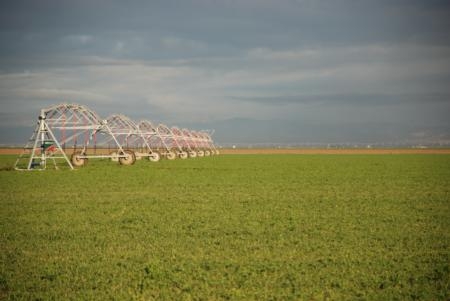
Allan Fulton, UC Cooperative Extension advisor for Glenn, Shasta and Tehama counties, said technology is improving the ability to organize crop data and get it to farm managers on the fly.
"With the right system," Fulton said, "farmers can get almost to-the-minute information on every aspect of their crop."
As new, integrated database systems are being created, new data-gathering equipment also is advancing for field use to further aid on-farm decisions, the article said. For example, the California Department of Food and Agriculture announced last week a $286,000 grant to UC Davis for work on a continuous leaf moisture monitoring system. Using thermal infrared sensors along with environmental sensors that measure ambient temperature and relative humidity, wind speed and incident radiation, the system's goal is to detect crop water status to support irrigation management.
Jeff Mitchell, a UCCE specialist in the Department of Plant Sciences at UC Davis, is evaluating overhead, or center pivot, irrigation technology, especially in a system that includes conservation tillage. The research is being conducted at the UC West Side Research and Extension Center in Five Points with equipment donated by industry.
The work group focuses on emerging crop- and soil-management techniques — conservation tillage, high-surface residue preservation, cover crops — to improve irrigation management, increase carbon storage and build soil quality.
"We're developing completely new cropping systems for the valley," Mitchell said, "and these get at the so-called three E's of farming—integration of equipment, economics and ecology."
Kings County farmer Dino Giacomazzi, said growers are thinking in terms of systems these days. Giacomazzi is a founding member of UC's Conservation Agriculture Systems Innovation, a workgroup that Mitchell chairs.
"It's very difficult to put things together piecemeal. Even to get advice about these more advanced systems is difficult," Giacomazzi said.